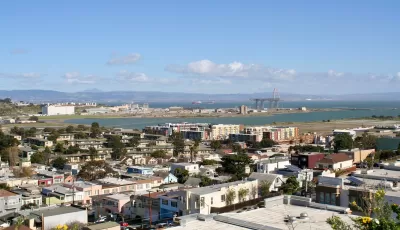Displacement in the San Francisco Bay Area has resulted in distinct mobility patterns and significant race and class inequalities.

A joint project between the Urban Displacement Project and the California Housing Partnership examines the mobility patterns of low-income people of color in the Bay Area to understand the various impacts of rising housing costs and displacement.
The study focuses on three Bay Area counties: Alameda, Contra Costa, and San Francisco. It finds that cities throughout the region lost significant numbers of black households between 2000 and 2015, and that black households were concentrate in particular cities with lower housing costs and less access to resources.
It also identifies areas that were newly segregated with high concentrations of poverty. This phenomenon is attributed to increased housing costs and migration. In addition, the percentage of households in these areas that were black or Latino increased over time. For low-income households that did move, a larger portion of household income went to rent as compared to households that did not move.
The report offers an overview on strategies to counter the effects of displacement and gentrification in the Bay Area:
[These counties] and the region need policies and investments that support housing affordability and stability for low-income people of color, while also increasing their access to high-resource neighborhoods. To be successful, these policies and investments must account for both the legacies of racial segregation and recent patterns of re-segregation.
The Urban Displacement Project has also conducted research on displacement and effects on quality of life, the role of market-rate and subsidized housing in alleviating the Bay Area's housing crisis, and ways to pinpoint areas at risk of gentrification.
FULL STORY: Rising Housing Costs and Resegregation

Planetizen Federal Action Tracker
A weekly monitor of how Trump’s orders and actions are impacting planners and planning in America.

Maui's Vacation Rental Debate Turns Ugly
Verbal attacks, misinformation campaigns and fistfights plague a high-stakes debate to convert thousands of vacation rentals into long-term housing.

San Francisco Suspends Traffic Calming Amidst Record Deaths
Citing “a challenging fiscal landscape,” the city will cease the program on the heels of 42 traffic deaths, including 24 pedestrians.

Amtrak Rolls Out New Orleans to Alabama “Mardi Gras” Train
The new service will operate morning and evening departures between Mobile and New Orleans.

The Subversive Car-Free Guide to Trump's Great American Road Trip
Car-free ways to access Chicagoland’s best tourist attractions.

San Antonio and Austin are Fusing Into one Massive Megaregion
The region spanning the two central Texas cities is growing fast, posing challenges for local infrastructure and water supplies.
Urban Design for Planners 1: Software Tools
This six-course series explores essential urban design concepts using open source software and equips planners with the tools they need to participate fully in the urban design process.
Planning for Universal Design
Learn the tools for implementing Universal Design in planning regulations.
Heyer Gruel & Associates PA
JM Goldson LLC
Custer County Colorado
City of Camden Redevelopment Agency
City of Astoria
Transportation Research & Education Center (TREC) at Portland State University
Jefferson Parish Government
Camden Redevelopment Agency
City of Claremont





























